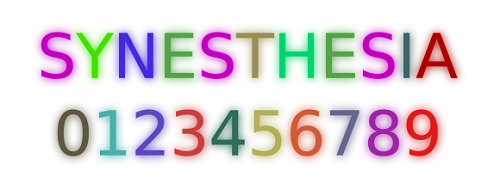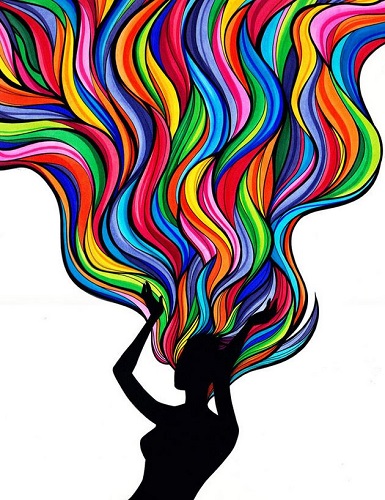Synesthesia is a neurological condition in which the stimulation of one sensory input inadvertently creates an automatic secondary sensation. Over 60 examples of synesthesia exist, with the most common examples being: the perception of letters and numbers as colors, the visualization of colors and shapes after hearing specific sounds, and mirror-touch, in which someone directly feels the pain or emotion of another around them. However, no case of mirror-touch applying to machines was ever documented until now.

People with synesthesia consistently and automatically perceive a particular color for each letter and number.
What is synesthesia
In a recent interview with Psychology Today, a 15-year-old Texas teenager identified only as “Kaylee,” for discretion's sake, discusses how her trait allows her to empathize with machines on an almost maddening scale. Kaylee describes her sense as a radio and various machines are radio stations into which she can tune in on. She feels a connection particularly with mechanically-powered machines that have moving parts, such as cars, robots, escalators, locks, levers, etc.
“When watching or manipulating a lever in action, I feel and am aware of the forces acting on it. When on an escalator, I feel the movement of the steps on the conveyor as if they're the notches up my spine, and the arm rest as the skin at the top of my upper arm and shoulder.”

Synesthesia is the result of neurological wiring, not personality traits.
According to psychologist Anton Sidoroff-Dorso, modern psychology accounts for the appropriation of tools as extensions of an individual's own limbs and body scheme. This is taken one step further with rubber hand illusion, which demonstrated that a human beings' ability to empathize extends onto inanimate objects as well.
The rubber hand illusion
In the experiment, a panel separates a your real hand from a rubber hand placed in the position where the real hand would have been. Afterwards, an experimenter simultaneously stimulates both your real hand and the rubber hand before only touching the rubber hand. At this point, you will feel as if your real hand is being touched even though it was only the fake! The experiment highlights how multisensory perception can influence how we perceive our own body; the brain “adopts” the artificial limp in place of the real limb by sight alone.
The human brain's reaction to the experiment may also explain why a synesthete prone to mirror touch can further appropriate an inanimate object such as a machine. More importantly, Dr. Sidoroff-Dorso states that “synesthesia seems to be evolving with technology. Of all our many cross-associations, it seems that we can blend senses with nearly any stimulus, including brand new ones. ”
Most forms of synesthesia result in sensory overloaded when confronted with too many stimuli, but in Kaylee's case she simply tunes it out. She becomes aware of a particular object by focusing on that object and feels its movement depending on her positioning relative to it. Machines in her proximity or those she touches, but are not acting on her, feel like a phantom limb or an extension of her will. “When watching cars crash in a movie, I feel them as they're ripped and crush, and I usually have to turn away and cut myself off from the stimulus.”
Kaylee is able to manifest the traditional synesthetic mirror-touch experience when being directly influenced by the motion of the machine, such as when she is riding in a car. The machine feels like an extension of her will, resulting in a shift of balance in her lower body and feet when the vehicle accelerates. When the car brakes it feels like her arms are extended outward with her wrists flexing up.
At the present, the condition is not fully understood by the medical community by ground breaking research into neuroscience continues to cover new ground.
Story via Psychology Today
Advertisement
Learn more about Electronic Products Magazine





